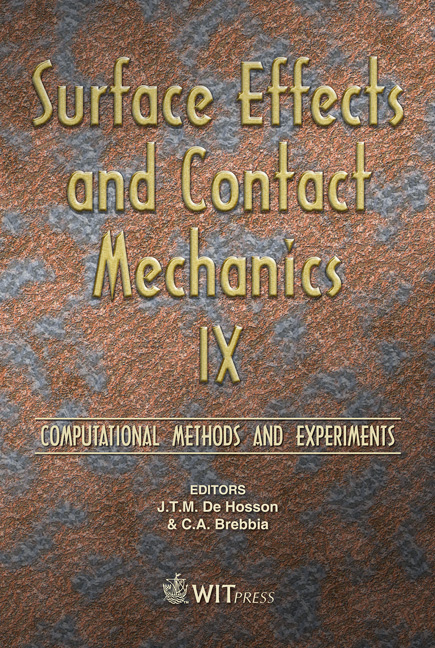Determination Of Wheel/rail Contact Points In The Simulation Of Railway Vehicle Dynamics
Price
Free (open access)
Transaction
Volume
62
Pages
10
Page Range
261 - 270
Published
2009
Size
704 kb
Paper DOI
10.2495/SECM090241
Copyright
WIT Press
Author(s)
J. Auciello, S. Falomi, M. Malvezzi, E. Meli & P. Toni
Abstract
The numerical simulation of system dynamics is today a standard in the design of railway vehicles; their typical applications are the suspension kinematics, handling performance and ride comfort as well as the generation of load data for lifetime prediction. One of the key points in this type of simulation is the model of the wheel/rail interaction, in other words the definition of the forces exchanged between the wheels and the rail in the contact points. The direction and the magnitude of the contact forces depend on the number and the location of the contact points. The procedure that allows one to define the geometry of the contact then has a significant effect on the reliability of the simulation. The component of the normal contact force to the contact surfaces can be defined as a function of the relative indentation between the surfaces. The component of the contact force tangent to the contact surfaces depends on the relative speeds between the surfaces in the contact area (wheel sliding). The authors have been working on the definition of efficient and reliable models of the interactions between the wheels and the rails and in particular for the definition of the contact points. Different algorithms have been analyzed and compared, based on semi analytical approaches and on neural networks. The paper will summarize the proposed methods and the results obtained from the simulation of two different sceneries. Two different models have been used in this test: the first one was realized with a commercial software, while the second one was developed and implemented by the authors. There is a global agreement between the models, although some differences can be seen during the transients due to the different methods for the determination of the contact points for the integration. Keywords: multibody simulation, wheel-rail contact, real time simulations.
Keywords
multibody simulation, wheel-rail contact, real time simulations





